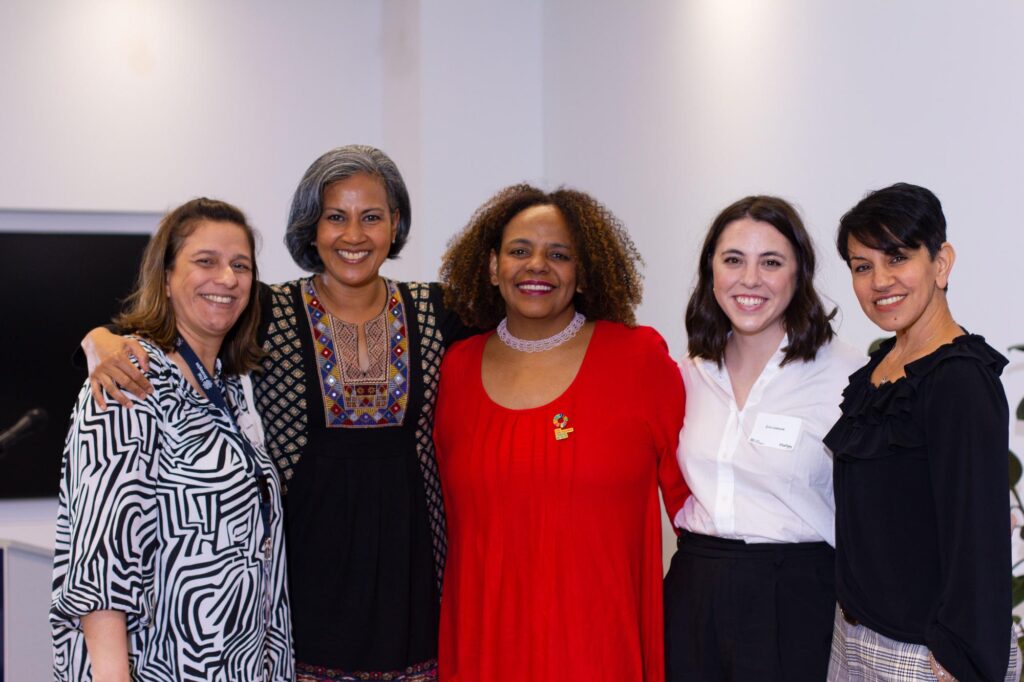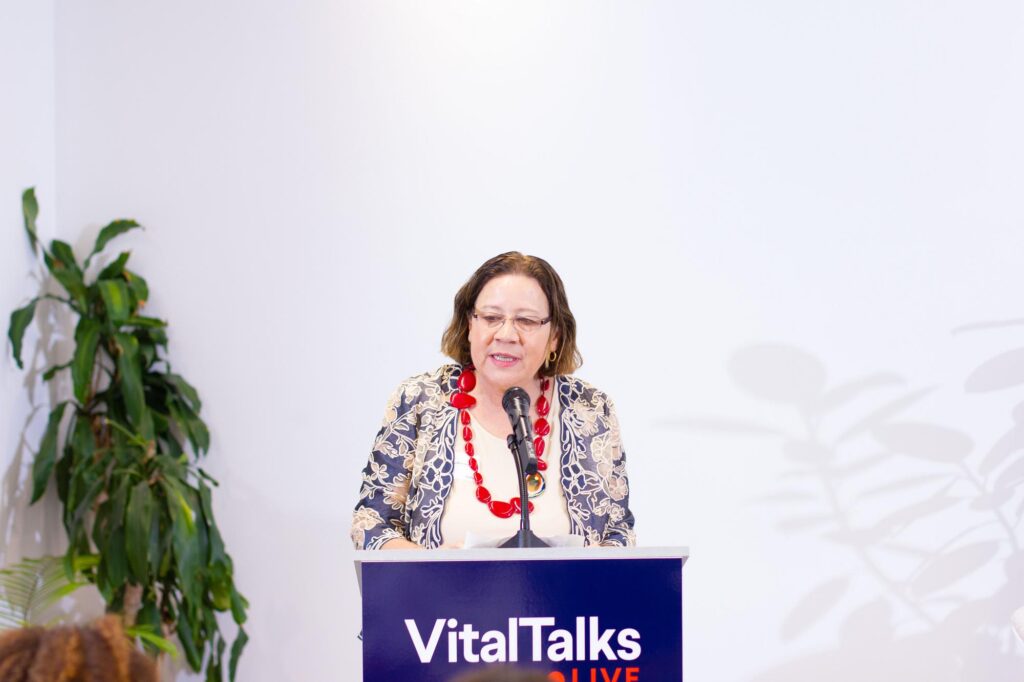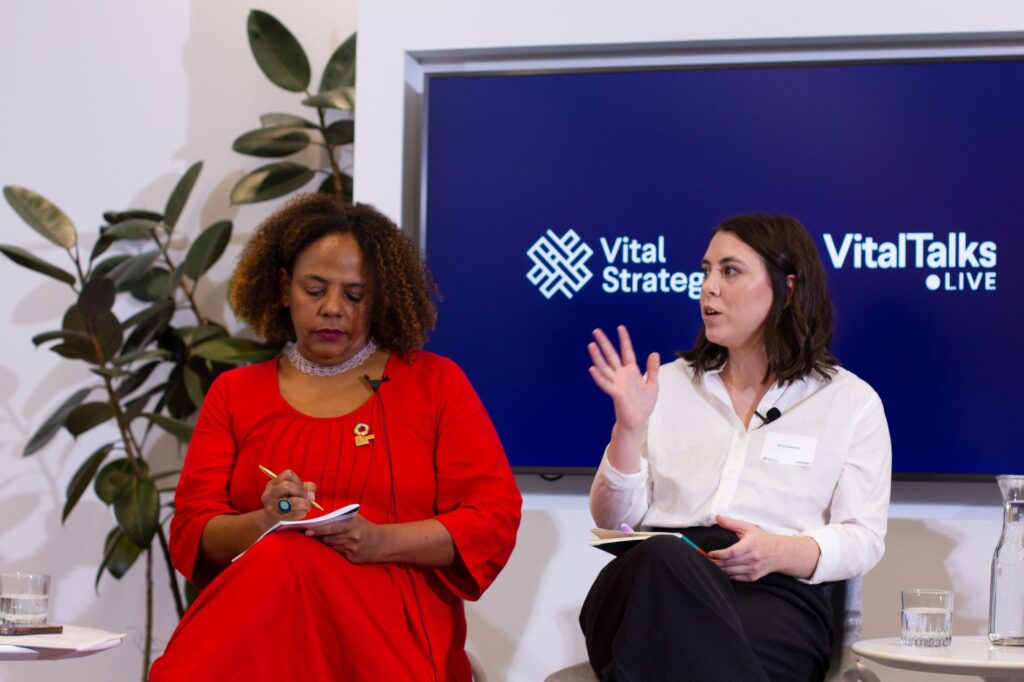
One in three women worldwide will experience physical or sexual violence in their lifetimes. Beyond this statistic lies women’s stories and experiences that are often ignored, and data that is not collected or used. Only through unraveling this data can we understand the magnitude of this crisis and inform solutions.
In May, as a part of the VitalTalks series and Women Deliver 2023 Global Dialogue, Vital Strategies convened a panel of experts who are using data-driven projects to inform solutions, advocate for women and understand the stories behind this widespread crisis.
Moderated by international broadcast journalist Shakuntala “Shaks” Santhiran, “Can Data End Gender-Based Violence” highlighted a number of innovative examples of how data is being used to counter gender-based violence.
Fatima Marinho, Vital Strategies’ Principal Technical Advisor for Women’s Health and Gender Equity, began the discussion by framing gender-based violence—including physical, sexual and psychological abuse—as an urgent public health problem. Governments, she said, should invest in evidence-based interventions to better map, report and prevent violence against women.
“Vital Strategies is committed to supporting countries to end gender-based violence,” said Marinho. “We stand with women and girls in solidarity and must work together to eradicate all forms of violence.”

One-Stop Centers
Ruxana Jina, Director of Vital Strategies’ Data Impact Program, highlighted the structural and societal barriers that prevent people from reporting gender-based violence. Often a woman’s only option is to report her case to the police, and women may be dissuaded by the slim number of cases that actually get prosecuted, and the fear that their families and communities might find about it.
One-Stop Centers, such as those in Mumbai were established to eliminate barriers and connect women to medical care, social protection and mental health services, Jina said. Vital Strategies collaborates with these centers to improve data collection and analysis, and developed a monitoring and evaluation framework to ensure the needs of women were properly being met and that the quality of care was standardized.
“It’s only through data that we can tell the true story,” Jina said. “Data unmasks the truth and tells us the true story around the true burden.”
Coaching Boys into Men
Leila Milani, Program Director, Global Policy & Advocacy at Futures Without Violence, described the Coaching Boys into Men program, which began in the United States with high school football players. Football coaches were trained and motivated to hold weekly locker room discussions with their players about equity, justice, respect and gender-based violence.
“We were using the sports model of coach as mentor,” Milani said, “basically to use that time period to influence the conversations in locker rooms about equity, about justice, but really specifically about respect, and preventing online abuse and gender-based violence”
The data collected revealed that after a few months, participants were found to be more likely to intervene when they witnessed abusive behaviors. Since then, this program has expanded to football and soccer teams around the world.
Online Gender-Based Violence
Erin Leasure, Sexual and Reproductive Health and Rights Specialist at the International Center for Research on Women, discussed her research on gender-based violence that is facilitated by technology, which is significantly broader than in-person violence. Online violence—such as sexual harassment via unwanted email or messaging—can occur anonymously, and perpetrators can avoid witnessing the impact.
“With tech-facilitated GBV,” Leasure said, “you can have people in your community, in your school, in your workplace, your friends, your family perpetrate violence against you online on digital technologies or your phone.”
To fill in the research gaps, Leasure is seeking to prevent online violence by uncovering the relationships between victims and perpetrators as well as the context of online violence. Leasure is applying this research in her work developing demographic health surveys to support the Department of Homeland Security’s domestic violence module.
“Gender-based violence is an issue deeply ingrained in our structures,” Leasure said. “We need action and solution-oriented research to really figure out not only what data we should be collecting and how we can use it, but what to do with it afterwards, and what the actual solutions are in various contexts.”

The Case of Brazil
In Brazil, the culture of silence throughout society contributes to underreporting, said Márcia Lima, National Secretary of Policies for Affirmative Action and Fighting and Overcoming Racism within Brazil’s Ministry of Racial Equality. One reason for this silence is that many Brazilian women are financially dependent on their husbands and fear losing their homes or custody of their children if they go to the police. Lima urged governments to allocate greater funding to research the racial, gender and societal impediments to reporting gender-based violence.
“We need more participation of civil society to pressure governments to create more and more information,” said Lima. “Data is knowledge, and knowledge is power.”
Sharon Kim-Gibbons, Vital Strategies’ Vice President, Public Health Programs and Acting Director, Data Driven Policy Initiative for Women’s Health, closed the conversation by underscoring the importance of data as a tool to end gender-based violence. Data must be complete, accurate, and consistent to make a difference, and it must include anecdotes and testimonies to shed light on the complexity of the issue—including root causes, local power dynamics, and social and gender norms. Then, the data must be used to advocate for and inform policies, programs and services.
“We must forge ahead and continue to do what we’re all doing, fight the fight, share our lot, our knowledge and learning,” she said, “and hopefully we can minimize this terrible, life-threatening situation for so many of our colleagues, friends and communities.”
Watch the event
Get Our Latest Public Health News
Join our email list and be the first to know about our public health news, publications and interviews with experts.